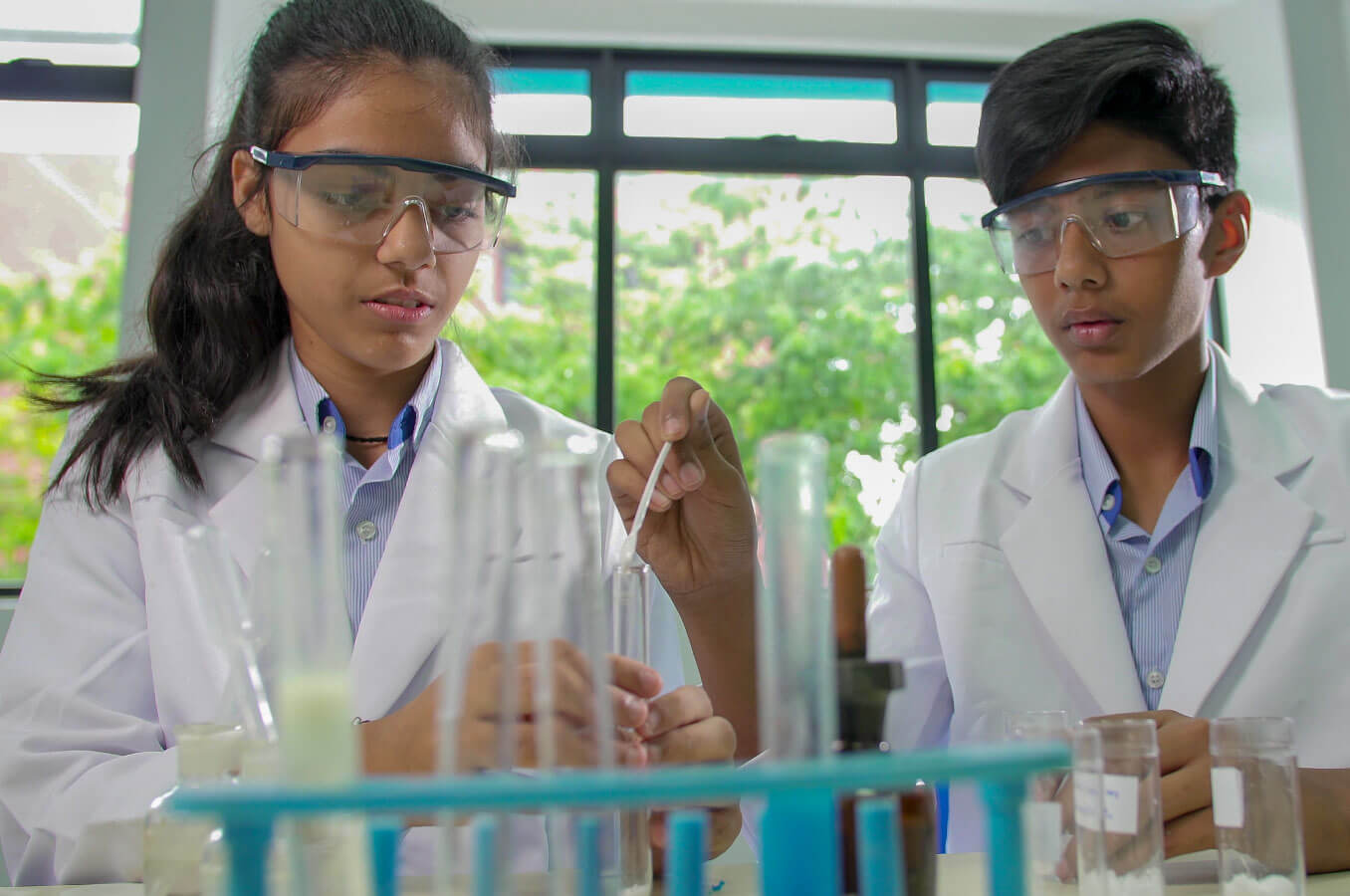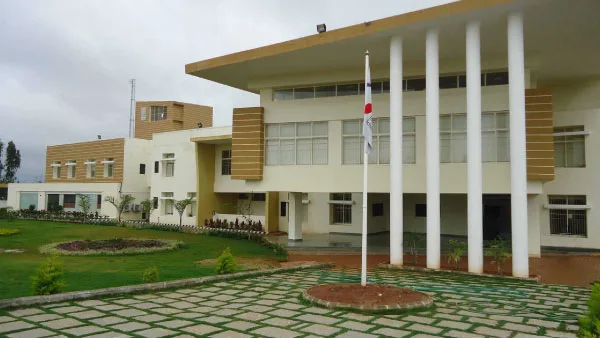Download our FREE Academic Calendar now! 📚 Start your child’s journey to success.
Table of Contents
- Causes of Health Problems
- 11 Common Health Issues for School Students
- 2.1 Food Poisoning
- 2.2 Sprains
- 2.3 Measles
- 2.4 Common Cold
- 2.5 Influenza
- 2.6 Nose Bleeding
- 2.7 Meningitis
- 2.8 Chicken Pox
- 2.9 Strep Throat
- 2.10 Mononucleosis (Mono)
- 2.11 MalnutritionMononucleosis (Mono)
- How Can Good Care for Children’s Overall Health be Ensured?
- Conclusion
- FAQs
Out of all other problems that students go through in their academic life, health issues are considered a major one amongst them. No matter how physically active students are, or whatever hygiene they maintain, there are some health problems that creep up and affect them.
Having said that, it must be noted that these are also some of the most common health problems that occur amongst children, and can be treated very easily by taking medicines and restricting some activities for a short span of time.
Basically, when a person is exposed to a community, the air they inhale or exhale contains dust, germs, bacteria, virus, etc. And inhalation of air polluted with dust or microbes on a regular basis might cause illness or allergies.
Such is the case with us all, and such is the case with school students. They are exposed to the environment of the school with many others like them. So, the air is bound to get polluted with dust, germs, and microbes like bacteria. These are the main reasons behind student health problems.
Causes of Health Problems
Before plunging into the most common diseases that students are affected by, let us have a brief idea of the causes of such health issues.
1. Dust
One of the main factors behind the root cause of health problems is dust. Dust is nothing but tiny particles of impurities present in the air. No matter how harmless it might seem, it causes major issues like asthma, breathing trouble, dust allergy, cough, etc., if a person is sensitive to dust.
2. Bacteria
They are free-living, tiny, and single-cellular organisms, which are present almost everywhere around the planet.
They also play a vital role in maintaining the ecosystem. But, they are also one of the most common agents causing common problems in high school students.
3. Virus
These can also be considered as a category of microbes. But their intensity to effect is much higher than that of bacteria.
The virus is an infectious agent, which stays dormant outdoors, but multiplies and replicates itself after entering the living cells of an organism. Diseases caused by viruses prove to be a little more serious than any other agents.

11 Common Health Issues for School Students
Now that we have an understanding of the causes of common health problems of a schoolchild, let us know about 11 of the most common health issues that school students face quite often.
1. Food Poisoning
One of the major issues affecting students’ health is food poisoning. It is caused by consuming uncovered, stale, unrefrigerated, or contaminated food.
Symptoms of this disease include sharp and consistent abdominal pain, diarrhoea, vomiting, etc. Sometimes vomiting may also occur along with high fever and chills.
According to doctors, food poisoning victims must avoid solid and dairy products, as they often elevate the uneasiness, and switch to clear fluids along with light meals.
2. Sprains
Well, this might not actually be a ‘disease’, but it is one of the most common injuries that a student faces. A sprain refers to the stretching or tearing of ligaments or joints. This usually happens while performing any physical activity.
It usually occurs in places like ankles, wrists, knees, legs, etc and the symptoms include severe pain and inflammation of the sprained area.
Also, while some sprains can be healed by ointments and physiotherapy, some may even require surgeries to be fixed.
3. Measles
Another common disease that students commonly get affected with, is measles. Although preventive vaccinations are readily available nowadays, still this disease persists and is often seen affecting school students.
It is caused due to a very contagious virus known as the morbillivirus. Symptoms include feeling low or sick and growing reddish patches or rashes all over the body.
4. Common Cold
Perhaps the most common children’s health issue is the common cold. And not just children, this is a disease that affects adults as well. In fact, almost everyone has been affected by this particular issue once in their lives.
The signs of the common cold are repeated sneezing along with coughing, throat irritation, and a runny or blocked nose. People and children sensitive to cold are likely to catch this disease during the advent of winter.
5. Influenza
This is also widely known as “flu” and is caused by the influenza virus. Influenza directly affects the respiratory tract of the victim. It is a highly contagious disease and can spread from an affected person to a healthy one through the former’s cough or sneeze.
Due to its high transmission rates and possibilities, affected patients are advised to stay at home for at least a week, or until signs like high fever, headache, runny or blocked nose, stomach aches, and fatigue diminish.
Proper medication and rest are needed to tackle these health problems of a school child.
6. Nose Bleeding
Dry nasal membranes cause nosebleeds, which are a major health problem among students. This is a prevalent problem among students who have a habit of picking up their noses regularly. When someone picks their nose, the blood vessels inside rupture, causing the nose to bleed.
Students who are on anti-allergic or decongestant medicine, as well as those who are prone to colds and sinus disorders, may develop nosebleeds.
Nosebleeds can also be caused by blowing the nose frequently. The easiest strategy to avoid a nosebleed is to ensure that the nasal passages are well lubricated and avoid picking up the nose.
7. Meningitis
Another health risk that students encounter on campus is Meningitis, a condition caused by bacteria or viruses that attacks the brain’s lining.
When a patient comes into contact with this disease, the patient’s brain swells, resulting in a serious condition that can lead to death if the severity increases.
Given the disease’s mortality, it’s important for the schools to keep an eye on the symptoms like the development of rashes, high body temperature along with chills, severe headache, excessive drowsiness, sore throat, etc.
Therefore, meningitis remains one of the top health issues and concerns in a student even today.
8. Chicken Pox
It is a contagious disease that causes the development of rashes and then itchy blisters all over the body. This is followed by high body temperature, and also severe pain in the throat during swallowing.
Moreover, children who have already been affected by this, have little or no chance of getting affected once again. But, those who didn’t contract the disease, might as well get affected by chickenpox at least once.
9. Strep Throat
Strep is one of the most prevalent bacteria found on the skin of students. Strep throat is a bacterial infection that affects infected students’ throats and tonsils. When an affected pupil coughs, sneezes or breathes, the contagious sickness spreads through the air.
The symptoms of strep throat include swollen tonsils, intense pain while swallowing, high fever, and sudden pain in the throat.
10. Mononucleosis (Mono)
Mononucleosis, more commonly called Mono, is caused by the Epstein-Barr virus, which is a common human virus that causes a problem for college and high schoolstudents.
Mono has the following symptoms- lymph glands get inflamed and a sense of fatigue is felt all the time and fever and painful throat are both present.
Because this virus spreads through saliva, affected students should avoid going to school or coming in contact with others. This disorder rarely causes health problems, but it remains in the patient’s body for the rest of their life.
11. Malnutrition
Now, this is a field where most parents’ opinions and complaints converge! Although some may call it ‘malnutrition’, that isn’t the correct term to describe this issue right here. Most kids have dislikes towards certain fruits and vegetables and tend to avoid eating them.
This results in missing out on some very essential vitamins and minerals, which eventually weakens the immunity system, and makes a child more prone to catching diseases easily.
Lack of proper nutrition has been and is one of the top current issues of child health.
Also Read: How To Prevent Sleep While Studying?
How Can Good Care for Children’s Overall Health be Ensured?
Schools should regularly conduct health inspections for students to check on the overall average health of the children periodically.
A balanced diet and physical exercise should be a part of the daily routine. Also, visiting the doctor for a general checkup at regular intervals and drinking plenty of water help do wonders in the prevention of health problems and illness.
Conclusion
These are some most common health issues and concerns in student, which needs to be addressed and tackled with utmost care and sensitivity.
Visiting a doctor on an immediate basis, getting proper medications, and taking proper care are some of the primary and essential things to do if a student is being affected by one of the above diseases.
Conclusion
Lessons and values taught by Mahatma Gandhi are as relevant today as ever. Every growing kid should be acquainted
with his life experiments and his struggles to shape himself.
These values and manners taught by Mahatma Gandhi may seem simple, but they are the lessons that students will forever hold.
FAQs
What are the most common health issues faced by school students?
School students commonly face health issues like food poisoning, sprains, measles, common cold, influenza, nosebleeds, meningitis, chickenpox, strep throat, mononucleosis, and malnutrition. Awareness and prevention are key to staying healthy.
How can food poisoning be treated in students?
To treat food poisoning in students, it’s important to avoid solid and dairy foods, as they can worsen symptoms. Instead, focus on clear fluids like water or broth. If symptoms persist, such as severe pain or dehydration, consult a doctor promptly.
What are the symptoms of measles in school students?
In school students, measles symptoms include feeling unwell, high fever, and developing reddish rashes all over the body. Early detection is vital for effective treatment and to prevent spreading the disease to others.
How can malnutrition be avoided in school students?
Malnutrition in school students can be avoided by encouraging a balanced diet rich in fruits and vegetables. Educating them about nutrition helps ensure they get essential vitamins and minerals for better health and immunity.




































